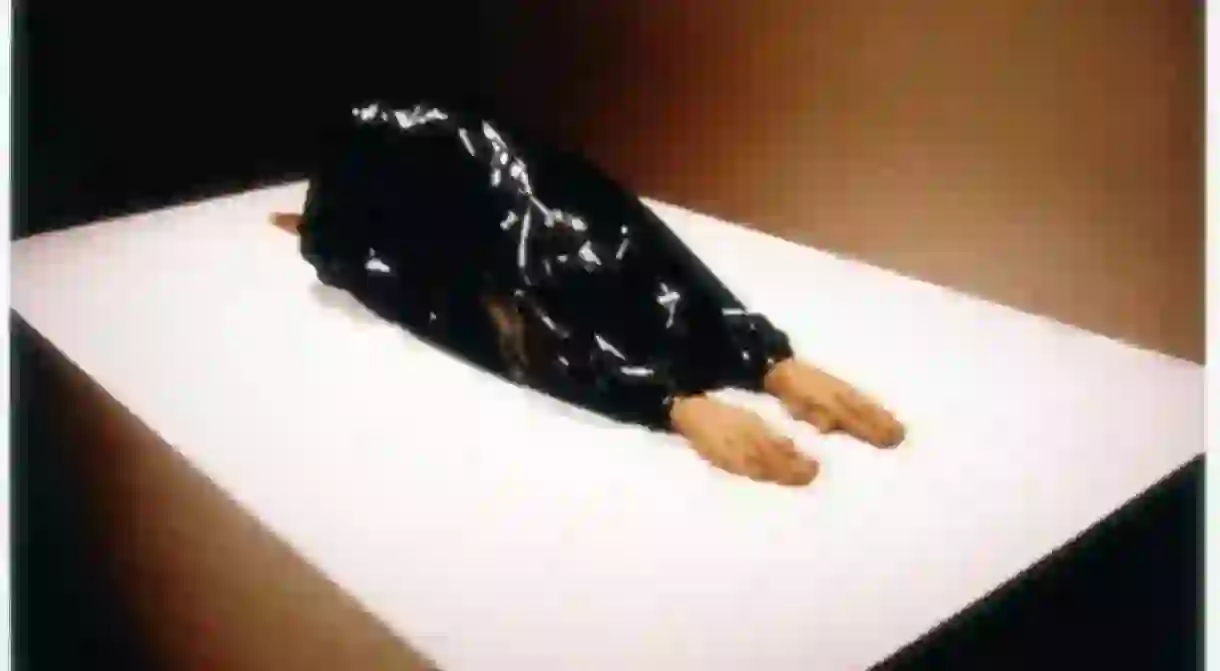An Exploration Of Human Atavism: Huma Bhabha’s Compelling Sculptures

Pakistani born sculptor Huma Bhabha is well known for her sculptures that are composed from various materials found in basic construction media and found materials. As Bansie Vasvani discovers, Bhabha’s assembled sculptures from found objects and detritus are a fearless and powerful excavation of baseline emotions, and the dark underbelly of human nature that never lurks too far from the surface. Bansie Vasvani examines Bhabha’s sculptures and her exploration of human atavism.

© Huma Bhabha, Untitled, 2006, Clay, wire, plastic, paint 114.3 × 243.8 × 152.4 inches (290 × 619 × 387 cm) I Courtesy Salon 94 and the artist.
Bhabha’s efforts are often interpreted through a political and international lens because of her Pakistani provenance and the post-apocalyptic stance of her imagery. Yet her work seems deeply rooted in a secular enchantment to express her sense of temporality, which converges the past and present, classic and contemporary to forge a new language of her own.
Bhabha’s work, Untitled (2005), made from clay, wood, wire, and plastic, suggests the evocative nature of her sculpture. A mound covered with a black industrial garbage bag is displayed on a white wooden plinth. Oversized clay hands and the skeletal vertebrae of a tail emerge from each end of what resembles a prostrate body in prayer. Part human, part animal her work is deeply entrenched in the evolution of the human species and harks back to a pre-modern era. Dispossessed of modern day cover, Bhabha’s sculptures allude to our animal heritage and leave us wondering if this humorous rendering is in fact a mockery of the human condition.

If contemporary art marks the materiality of the art making process, Bhabha’s work is embedded in promulgating this practice. She breaks from the traditional sculptural form in the way she assembles her materials and approaches her subject. In Twins (2011), the assemblage reveals the wire on which the lumpy clay forms the semblance of a human face with a trunk like nose, and the rough clamminess of the Styrofoam offers an intriguing tactility as she paints an x-ray like image of an oesophagus and rib cage on its frontal form. By utilising material traditionally used for pre-casting bronze sculpture, Bhabha’s fabrications both engage and disengage from the past as she navigates towards a new code we must decipher. Furthermore, by combing totemic qualities with the anthropomorphising features of her works, the artist makes it difficult to categorise her method. Each edifice seems to point towards the construction of a new canon.
Central to Bhabha’s technique is that the material embodies a kind of mythic power that is energised through its manipulation and placement. In There is no killing what can’t be killed (2012,), she reconsiders the notion of the monument. Bronze immortality is discarded for cork, Styrofoam, acrylic paint and oil stick – all aged and degradable. Her oversized cork figure with a blue Styrofoam bear-like face, and deeply furrowed cork body overturns the authoritarian aspect of the monument in favour of ad hoc ephemera. Yet it is her choice of ephemera that imparts enormous gravity to each piece as it reflects the fragility of the human condition. Deeply engaged with history in composition and theme, these pieces allude to Greek and Egyptian mythology but depart in unearthing Bhabha’s own ‘unnatural histories’.

Her drawings for the Unnatural Histories (November 2012 – April 2013) are not dissimilar in the sense that like the sculptures they are made from a combination of materials and techniques. Photographs of abandoned landscapes are often painted over with bold brush strokes of a large, overpowering foot. The resulting image can be portentously intimidating.
Cryptic, compelling and haunting, her work combines high and low art by drawing allusions to sci-fi, robotic creatures and African masks. Bhabha evokes the archaic and futuristic by tapping into the principle of monstrosity as she exposes our human and animal overlays as part of the same interior image. Ultimately, her mummified and shamanistic figures dissemble our inheritance in a radical way and make us question rather than offer an interpretation of who we are and where we have been.
By Bansie Vasvani













